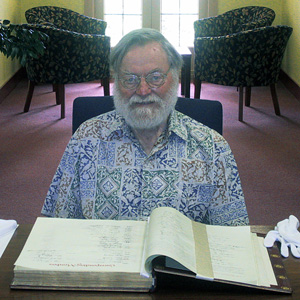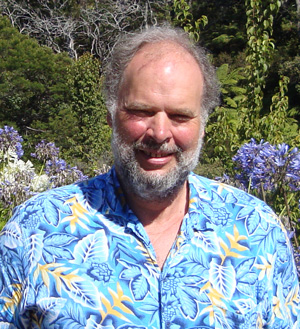
Professor Hugh Possingham FAA—Appointed Queensland Chief Scientist
The Australian has published its Research 2020 magazine featuring the top 250 Australian researchers across 255 fields. The following Academy Fellows were featured.
Among Australia’s top 40 researchers, measured by their performance over their career.
Professor Benjamin Eggleton FAA FTSE, University of Sydney—Optics and photonics
Professor Ping Koy Lam FAA, Australian National University—Physics and mathematics
Professor William Laurance FAA, James Cook University— Biodiversity and conservation biology
Professor Lidia Morawska FAA, Queensland University of Technology—Environmental sciences
Professor Ian Paulsen FAA, Macquarie University—Life sciences and Earth sciences
Professor Dacheng Tao FAA, University of Sydney—Computer vision and pattern recognition
Researchers with the highest number of citations from papers published in the last five years in the 20 top journals in their field.
Professor Maria Forsyth FAA, Deakin University—Electrochemistry
Professor Yiu-Wing Mai AM FAA FRS FTSE, University of Sydney—Composite materials
Professor Joss Bland-Hawthorn FAA, University of Sydney—Astronomy and astrophysics
Professor Ivan Marusic FAA, University of Melbourne—Fluid mechanics
Professor Dietmar Müller FAA, University of Sydney—Geophysics
Professor Dacheng Tao FAA, University of Sydney—Computer vision and pattern recognition
Professor Adele Green AC FAA FAHMS, QIMR Berghofer—Dermatology
Professor James McCluskey AO FAA, University of Melbourne—Immunology
Professor Patrick McGorry AO FAA, University of Melbourne—Psychiatry
Professor Peter Visscher FAA FRS, University of Queensland—Genetics and genomics
Professor Peter Cawood FAA, Monash University—Geology
Professor Chris Dickman FAA, University of Sydney—Zoology
Professor Jane Elith FAA, University of Melbourne—Ecology
Professor Phil Hugenholtz FAA, University of Queensland—Microbiology
Professor Terry Hughes FAA, James Cook University—Life sciences and Earth sciences (general)
Professor David Lindenmeyer AO FAA, Australian National University—Biodiversity and conservation biology
Professor Robert Parton FAA, University of Queensland—Cell biology
Professor Leigh Simmons FAA, University of Western Australia—Animal behaviour and ethology

5 October 1923 to 1 September 2020
Professor Joe Connell was admitted a Corresponding Member of the Academy in 2002. He was Emeritus Professor at the University of California, Santa Barbara, since 1956.
Professor Connell was born in Indiana and studied at the universities of Chicago, California and Glasgow. It was in Scotland that he conducted his experimental ecological studies on different species of barnacle, becoming a pioneer of the school of ecology that advocates manipulative field experimentation.
Professor Connell later focused on the determinants of biodiversity, particularly in Australian coral reefs and rainforests. He tested hypotheses on tropical diversity and was a proponent of the idea that disturbance can maintain the diversity of ecological communities.
Read a report from a 2010 symposium that celebrated and explored Professor Connell’s influence and impact.

31 December 1952 to 6 September 2020
Sir Vaughan was admitted a Corresponding Member of the Academy in 1992. He was Stevenson Distinguished Professor of Mathematics at Vanderbilt University and Professor Emeritus at University of California, Berkeley.
A celebrated mathematician, Sir Vaughan was the only New Zealander to be awarded the maths equivalent of the Nobel Prize, the Fields Medal, in 1990.
Sir Vaughan was born in New Zealand and always remained a proud New Zealander. He obtained his BSc and MSc from the University of Auckland. After graduation he was awarded with a Swiss government scholarship and completed his Docteur ès Sciences at the University of Geneva, for which he was awarded the Vacheron Constantin Prize.
His most celebrated work was on knot polynomials. In 1983 Sir Vaughan made a startling discovery in the theory of von Neumann algebras. This breakthrough in theoretical mathematics had direct and significant applications in a range of scientific fields. Sir Vaughan’s findings had a profound effect on such disparate fields as knot theory, statistical mechanics, quantum field theory and the prediction of DNA configurations in certain biological interactions.
Although he spent the majority of his career in the United States, Sir Vaughan contributed generously to New Zealand mathematics. Every summer he offered courses and lecturers at the University of Auckland to encourage and mentor students and early-career mathematicians. He co-founded and led the NZ Mathematics Research Institute (NZMRI) to promote and foster high quality mathematics.
Sir Vaughan was elected a Fellow of the Royal Society in 1990, an Honorary Fellow of the Royal Society Te Apārangi in 1991, a member of the American Academy of Arts and Sciences in 1993, and a member of the National Academy of Sciences (USA) in 1999. In 1991 the Royal Society Te Apārangi awarded Sir Vaughan their highest award, the Rutherford Medal and in 1992 he received an honorary DSc from the University of Auckland.
See the tribute to Sir Vaughan in the New Zealand Herald.
© 2025 Australian Academy of Science